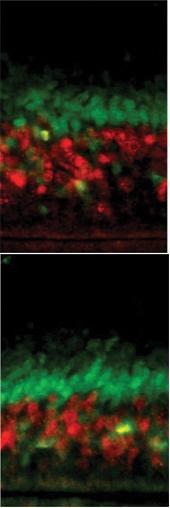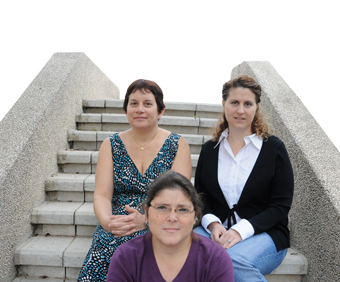In most cases, an excess or lack of a gene copy does not cause any harm, but in some cases an abnormal amount of it can cause diseases

Correct measurement is a proven recipe for success in cooking, managing emotions, and many other areas, including genetics. For example, the gene called LIS1 plays an essential role in the organization of neurons in the developing brain. When a fetus lacks a single copy of the LIS1 gene, its brain does not develop the characteristic folds, and it is born with the "smooth brain" syndrome (lissencephaly). These babies suffer from severe mental retardation. But what happens if the fetus has several copies of this gene? A new study by Prof. Orli Reiner, from the Department of Molecular Genetics at the Weizmann Institute of Science, shows that multiple copies of LIS1 may also cause various medical problems.
Prof. Reiner previously discovered the connection between LIS1 and smooth brain syndrome. In the new study, she succeeded, together with the members of her research group, in discovering the role of the gene and the reason why its lack, or multiple copies, affects the developing brain. It turns out that LIS1 plays an important role in determining polarity in the cell - that is, the way in which the various organelles are arranged inside the cell, and the areas where the cell produces molecules that function as communication sites with neighboring cells. Neurons change their polarity several times during the process of embryonic development. The polarity changes, for example, when a stem cell divides asymmetrically, so that a stem cell is formed, and another daughter cell that begins to differentiate into a nerve cell. Polarity also plays a role in the migration of young neurons from one area to another in the embryonic brain.
One of the latest findings in the study of the human genome shows that many genes - their number is estimated at about 3,000 - may appear in different people in varying amounts of copies. To the normal amount of two copies - one originating from the mother and one originating from the father - an additional copy may be added. In another common case, one of the two copies is missing. Although, most genes are not sensitive to changes in the number of copies, so an excess or lack of a genetic copy does not cause any harm, but in some cases, an abnormal amount of them can cause diseases.
Dr. Tamar Sapir and Talia Levy, from Prof. Rainer's research group, developed model mice in whose brains an excess amount of the LIS1 protein is formed (as a result of the duplication of a single gene). Thus it turned out, that a brain that produces a large and excess amount of LIS1 is smaller than normal. In a deeper examination, it became clear that the cell nuclei in the reproduction area had a tendency to move faster than normal nuclei - something that may indicate problems in the cell cycle of the embryonic stem cells in the brain. In addition, their movement was less controlled. The migration of the nerve cells to the outer region of the cerebral cortex was slower, and more cells died during it, which may explain the decrease in brain size. Another finding showed that an increase in the level of the LIS1 protein caused a greater disorder of various factors in the cell.
Are the results of the study in mice also valid in humans? To answer this question, the institute's scientists collaborated with Prof. Jim Lufsky and Dr. Weimin Bee from the Baylor College of Medicine in Houston, Texas. Together they tested blood samples using a method that compares the DNA of sick people with that of healthy people. In this way, seven people suffering from various developmental problems were found, and in all of them multiple copies of LIS1 or one of the genes adjacent to it, which also play a role in brain development, were discovered. The research findings, recently published in the journal Nature Genetics, show the effect of doubling a single gene in model mice, and link it to a new disease that occurs in humans as a result of genetic variations.

Prof. Reiner: "Variation in the number of copies of genes is much more common than mutations, and our research shows that doubling the number of copies of a single gene is enough to cause disease. Studies show that diseases such as schizophrenia, epilepsy and autism are related to variations in the number of copies of certain genes. It is possible that the reason for this is that the excess or missing copies affect basic processes in the brain, such as the migration of nerve cells."
In short: the question: Can multiple copies of the Lis1 gene - the lack of which causes the "smooth brain" syndrome - lead to the development of medical disorders?
The findings: The duplication of this gene in mice caused the development of a smaller brain, disrupted the processes of neuronal migration, and violated the normal order of various factors in the nerve cells in the brain. In blood tests of patients suffering from various developmental problems, multiple copies of this gene or genes adjacent to it were found.

One response
Before conducting the study, did the researchers check that they do not suffer from LIS1 multiplication?
: )